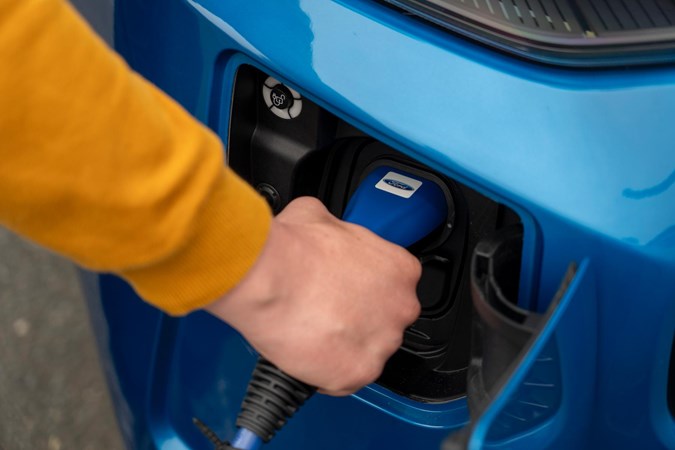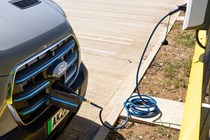Companies looking to put in a big order of vans might well have to order a proportion of electric vans as part of the deal as manufacturers look to hit zero-emission vehicle (ZEV) targets.
The ZEV mandate, implemented this year, stipulates that 10% of vans sold by each manufacturer must be fully electric. The current sales figures are some way short of that, with the current market share at less than 5% for the first four months of 2024. More concerningly for brands looking to hit targets, this is a lower percentage than the same period in 2023.
The targets set for manufacturers go up each year, too, meaning that, by 2030, 70% of new vans sold in Great Britain must be zero emission vehicles, rising to 100% by 2035.
Despite the push from the government to introduce more zero emission vehicles, there is still a decline in the demand for battery electric vans (BEVs), which fell by 42.4% compared to the previous year in April, according to the Society of Motor Manufactures and Traders (SMMT).
The ambitious targets have put a lot of pressure on vehicle manufacturers to make their electric cars and vans more affordable and accessible not only to businesses and fleets, but private buyers as well. Ford is already preparing to limit UK sales of its petrol and diesel vehicles to meet the government’s zero-emission goals.

Head of fleet at the National Grid, Lorna McAtear, told our sister publication Fleet News at 10 webinar that manufacturers were insisting she could only purchase vans with internal combustion engines (ICE) if 10% of the order consisted of fully electric vehicles.
She added: ‘When it comes to vans, these have got to be operationally efficient vehicles.’
McAtear isn’t alone in facing this problem; fleet director at the AA Duncan Webb, also encountered similar issues. He told the webinar he was starting to see ‘linked’ sales, where fleets were being required to order a certain quota of electric vehicles (EVs) when ordering ICE vehicles.
Webb said: ‘If you do want to buy a significant number of units as a fleet, then you have to buy a certain component volume of the relevant product.’
The current absence of financial incentives puts manufacturers in a position where they rely heavily on business fleet operators to meet their targets for electric van sales. However, the corporate tax system has long been used to drive change in automotive buying behaviour. Government has previously incentivised diesels when it was looking to lower the average CO2 emissions of the cars on UK roads.
How could the ZEV mandate impact consumers purchasing vans?
Targets
It’s highly unlikely that targets will be introduced for consumers – you can’t force someone to buy 10% of an electric van after all… What you might encounter is a sales person who is under pressure to hit a target, so a good deal on an EV might be more forthcoming.
Van-specific charging infrastructure
A significant concern for consumers considering the purchase of electric vans is the accessibility and availability of van-specific charging infrastructure, essential for smooth operation. Without adequate investment in charging points by manufacturers and policymakers, eventually deploying full electric vans could prove challenging for consumers.

As of April 2024, Zapmap reports over 61,323 charging points spread across 32,697 locations in the UK. Despite an increase in charging points being added, it is a still a factor concerning consumers in making that jump to EVs.
As more EV vans head out, there might be more points added. Crucial to this will be points in accessible areas, with big enough parking spots for large vans to fit into – a space in a multi-storey car park is no good for a Mercedes Sprinter for example.
Second hand values and availability
If companies are forced to buy more electric vans, particularly ones they don’t really want, then these might well end up on the market sooner and with fewer miles on the clock. This could mean more choice for those looking to buy a nearly-new electric van.
However, more vehicles of a certain type can also push used values down – if you have more choice then sellers have to drop prices to entice buyers. This could be bad news if you are selling, but great news if you are shopping around.
Just so you know, we may receive a commission or other compensation from the links on this website - read why you should trust us.






